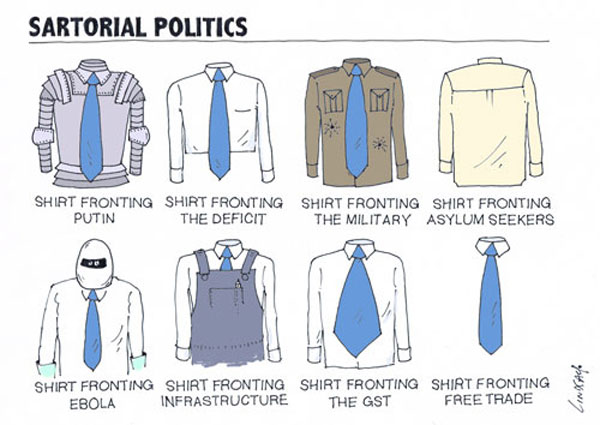If you like reading comics in newspapers then you had better take a photo of them while they are still there, because the newspaper industry is doing a great job in killing them off.
Over the past 20 years it has become the trendy thing to do for newspaper editors to reduce the number of comics they publish. Not just in Australia, but all over the world. Just why, is baffling comic strip artists everywhere. Because following the deduction in the number of comics being published, there is a decline in circulation.
The reduction is always accompanied by other redesign contributions, so it is always hard to put the loss of circulation down to just the loss of comics. However when confuted by a continuing trend it is very hard to argue there is any newspaper anywhere, which has benefited in anyway by the comic strip reduction.
On the positive side for comic strip artists, while newspapers have been reducing the number and size of the comics they publish, the sale of comic books and graphic novels has been increasing. Comics have also been supplying Hollywood with an increasing number of super heroes on which to base blockbuster movies.
Comics are drawn, written and read in every country around the world. They started to become popular as newspaper features towards the end of the 19th century. Comic books are older. The Japanese were reading them in the 1700s. The Europeans were at it in the 1830s.
The comic book industry in Australia started to take off back in the 1930s. It has been through some very high highs and some very low lows. Peter Coleman, in his 1963 book Obscenity, Blasphemy, Sedition pointed out that, “by 1954 there were over 60 million comic books were produced” in Australia each year.
That was a high point in the comic book industry in this country. Cheep imports, over supply and the arrival of television in Australia all contributed to the industries decline over the following 20 years.
It was in the 1951 when the power of comic strips in Australia was best demonstrated. Jimmy Backs moved his Ginger Meggs comic from the Sunday Sun to the Sunday Telegraph on June 3, and 80,000 readers moved newspapers with Ginger. Back then Bancks was by far the highest paid person in Australian media.
It has all been down hill for comics and comic strip artists since then. Now newspapers are paying so little for comic strip content many artists need a second job so they can pay their bills.
When the Sunday Sun merged with The Sunday Herald to form The Sun-Herald on October 11, 1953 the new paper had the best comic section of any newspaper in Australia. It also had the biggest circulation.

In the late 1970s the quality and number of comics started to be decreased. Circulation started to decline.
Over at the Sunday Telegraph the quality and number of comic strips started to increase. Circulation started to increase too.
Over the next 30 years those trends have continued and now the Sun-Herald’s comic section is very small, and its circulation is considerably lower then the Sunday Telegraph.
A few years back Fairfax reduced the size and number of comics being published in the Sydney Morning Herald. The reason they gave was that they wanted to give extra space to puzzles. They now only publish three comics (all imported), and circulation has continued the downward spiral.
About a year ago, News Corporation reduced the size and number of the comics they published in their major metropolitan daily newspapers. Every paper suffered a circulation decline.
Now the Australian Provincial Newspapers group is about to reduce the number of comics they publish. They have been conducting a readership poll to establish which are the most popular comics of the ones they publish.
While reducing the comics they intend to follow, News Corporation continues to experiment and increase the number of puzzles they will print. Obviously they are doing this because they believe it will give their newspapers more readership appeal. However given the history of newspapers all over the world taking similar action, it is a reasonable bet they are not going to succeed.
Yes, editors will say there are many factors affecting newspaper circulation. They will say things have changed since the arrival of the Internet. That might be true, but reducing the number of comics in a newspaper is a trend which started before the Internet arrived. So too did falling circulations.
They will say they are countering to reduction of comics with increased numbers of puzzles and games. They will say these are popular with readers. Both statements could well be true. But given the correlation between the reduction of comic content and reduced circulation it is surprising not one editor anywhere has tried increasing the comic strip content to see if it leads to a circulation gain.
* Lindsay Foyle is a freelance cartoonist who has been writing on the history of Australian cartooning for three decades. He is also a former president of the Australian Cartoonists’ Association and a former deputy editor of The Bulletin. He is a weekly cartoonist for New Matilda, and a Walkley Award finalist.
Donate To New Matilda
New Matilda is a small, independent media outlet. We survive through reader contributions, and never losing a lawsuit. If you got something from this article, giving something back helps us to continue speaking truth to power. Every little bit counts.



